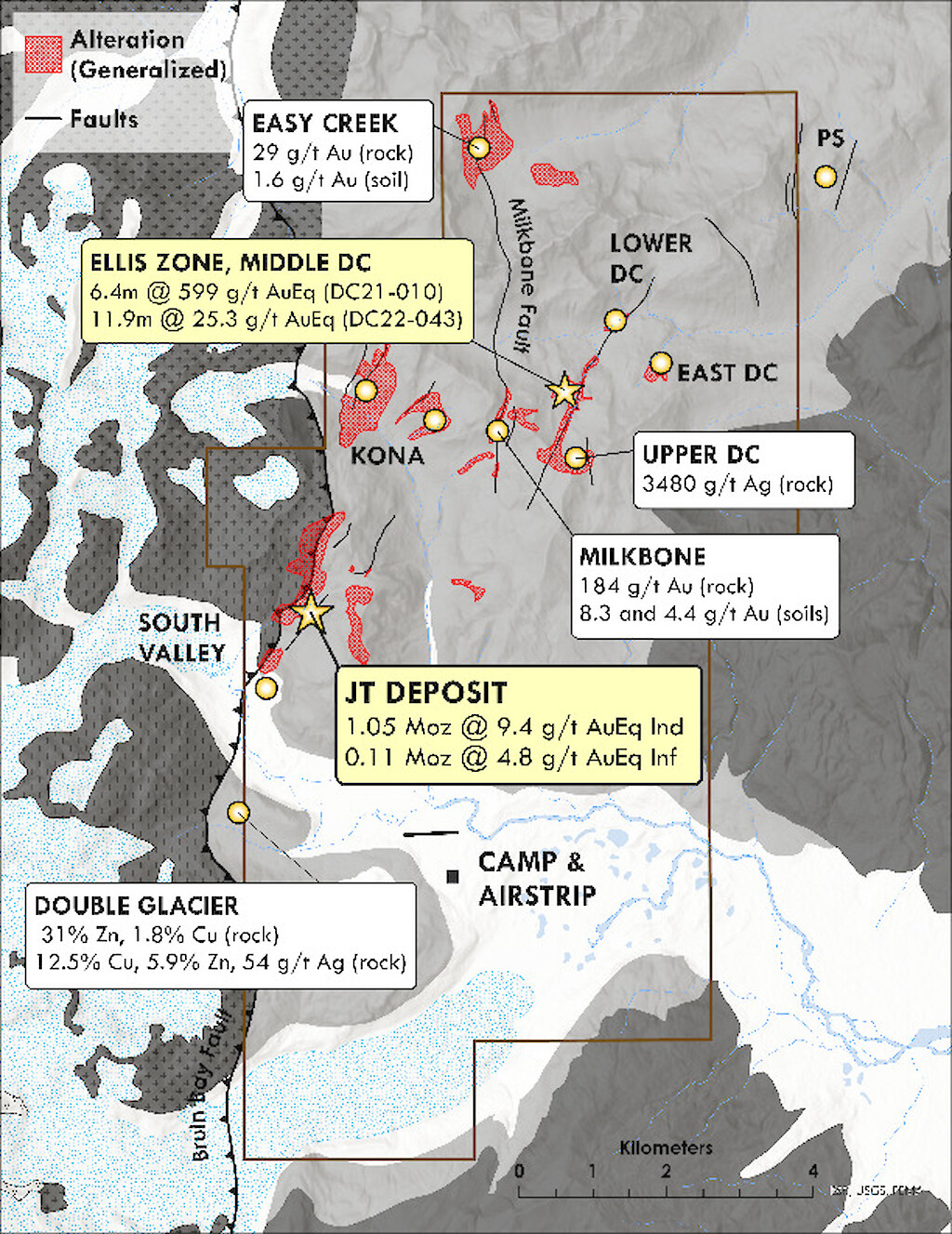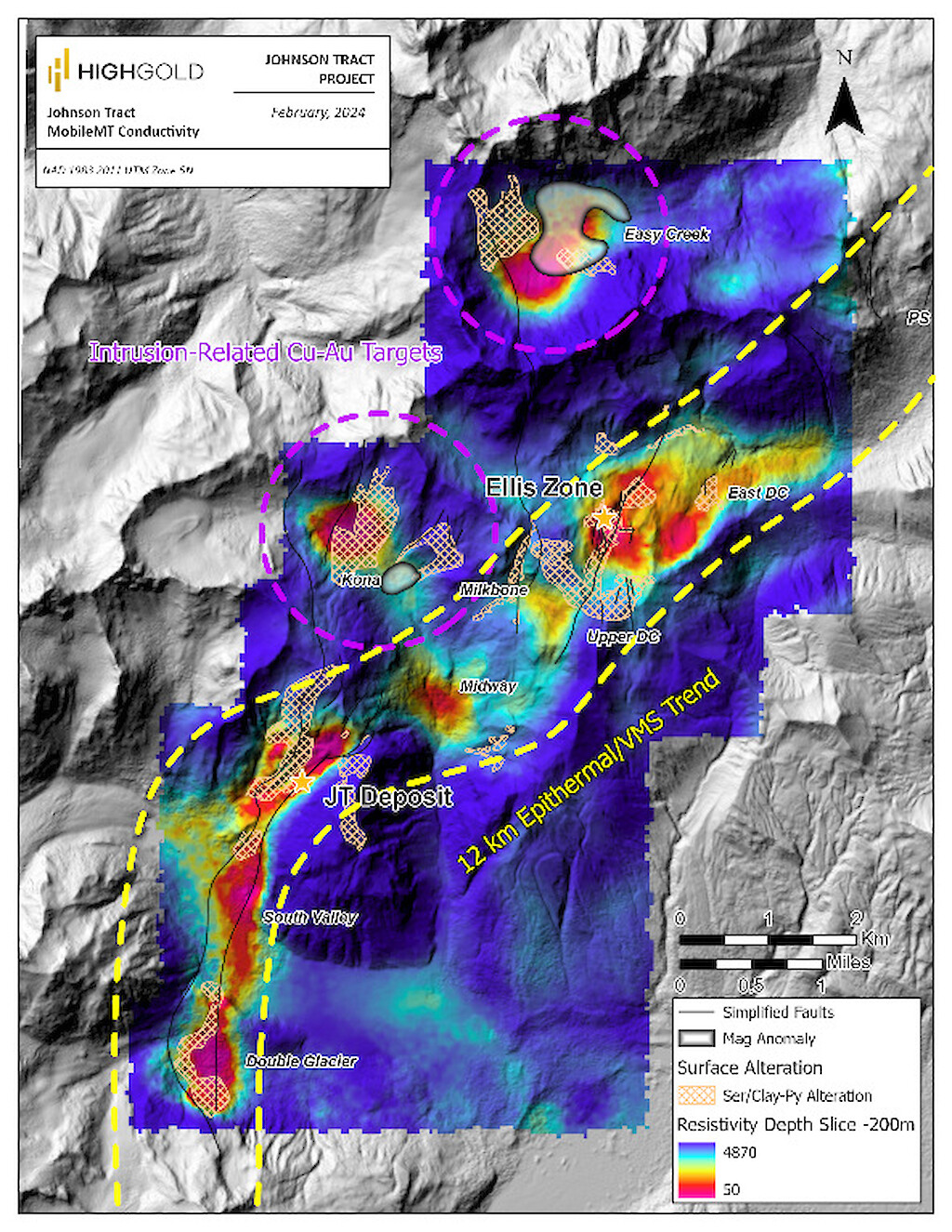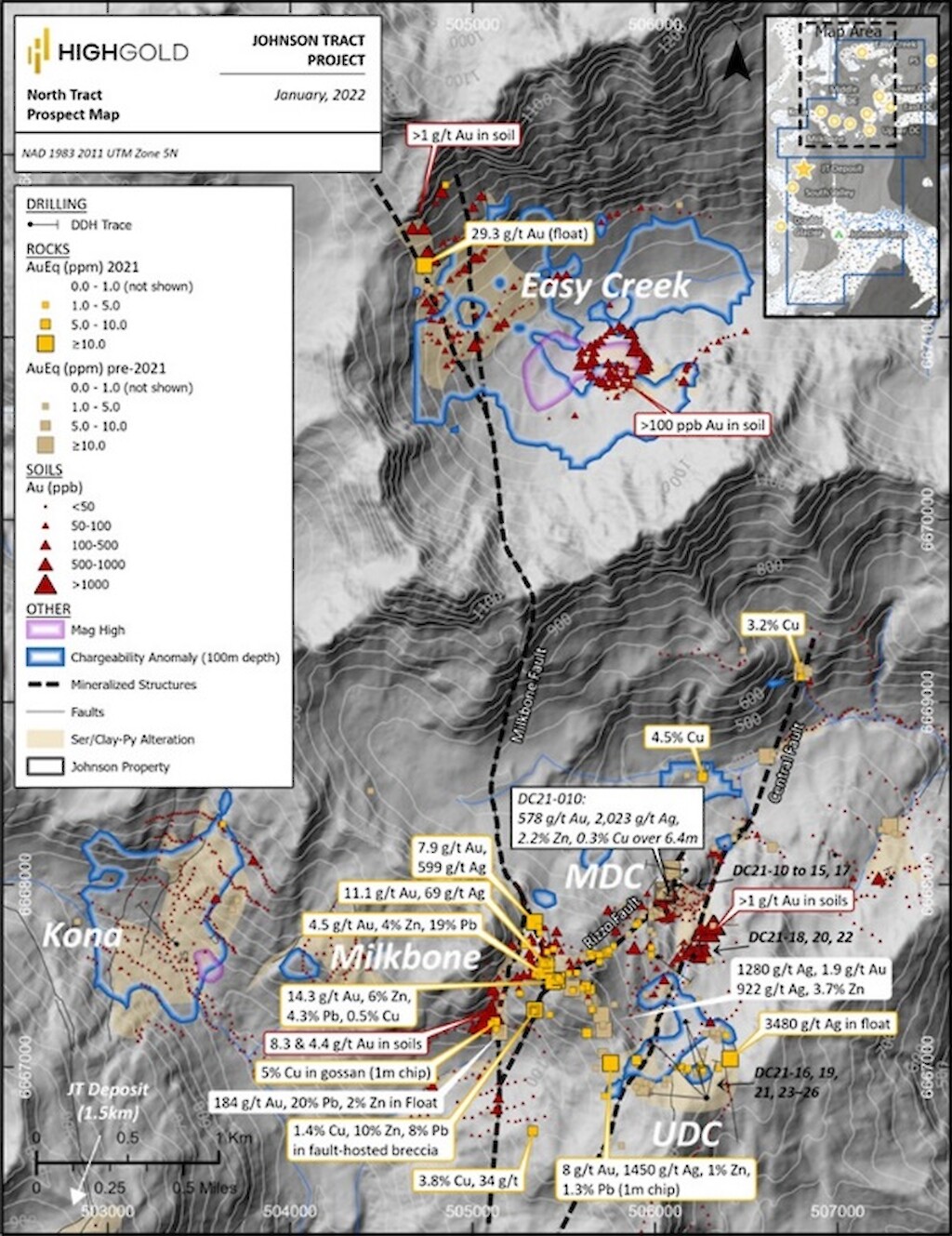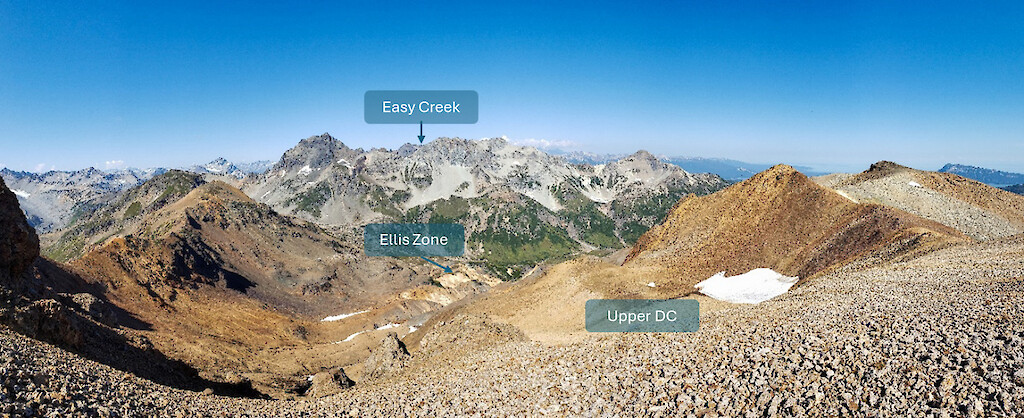Larger District Opportunity
The district-scale potential at Johnson Tract, like that found at many VMS and epithermal districts, is supported by the presence at least nine (9) other prospect areas with similar alteration and mineralization styles. The prospects are distributed over an approximate 12-kilometer strike length, most of which are early-stage raw prospects with little or no prior drilling. The best-known prospects are Difficult Creek (DC), Kona, Easy Creek (EC), South Valley, and Double Glacier.
Property Map

Map showing MobileMT apparent resistivity outlining major prospects.

Map showing northern prospects: DC, Milkbone, Kona, and Easy Creek (January 2022)

Difficult Creek (DC) Prospect
Alteration at DC consists dominantly of pervasive sericite and pyrite and locally abundant anhydrite/gypsum and clay on surface. Alteration has a structural and stratigraphic control and is strongest in a unit of shallowly north-dipping dacitic volcaniclastic rocks that underlie a package of less altered basaltic volcanic and volcaniclastic rocks. Alteration is exposed in erosional windows and along structures that cut the overlying basaltic rocks. Alteration and mineralization are exposed in a 1.5 x 3.0 km area, suggesting a very large, partly buried mineralizing hydrothermal system. The Central Fault, a major northeast-striking, altered, and mineralized fault cuts the DC prospect area and is a likely control on mineralization.
Mineralization at DC occurs as base and precious metal- and sulfide-rich quartz-carbonate veins and breccias, similar to mineralization at the JT Deposit. Local surface mapping and sampling suggests that gold-rich volcanogenic massive sulfide (VMS) style mineralization may also occur near the contact between the dacitic tuffs and overlying basaltic rocks (MDC prospect). The basaltic capping rocks locally host abundant silver- and gold-rich epithermal-style quartz veins at higher stratigraphic elevations (UDC prospect), further evidence of a large, partially blind mineralized hydrothermal system linking various prospects at DC.
DC Prospects from UDC looking North towards MDC. Easy Creek occurs over the ridge to the North.

Milkbone Prospect
The Milkbone Fault is a property-scale, west-dipping structure with local zones of alteration, mineralization, and spatially associated high-grade soil, grab, and float samples. The Milkbone Prospect occurs west of DC and may be in part related to the DC mineralizing system. The Milkbone Fault is also mineralized to the north in Easy Creek valley where high Au-grades have been sampled from within and around altered faults.
Kona Prospect
The Kona Creek Prospect consists of an area of strong phyllic to advanced argillic alteration (pyrophyllite ± dickite), approximately 0.4 km x 0.8 km, hosted in a series of dacitic tuffs laterally equivalent to those hosting the Johnson Deposit to the south. IP surveys have identified chargeability and conductivity anomalies coincident with surface alteration at the Kona Creek Prospect, in addition to anomalous pathfinder elements (Bi, Se, Te) in surface soils. Alteration and both geophysical and geochemical anomalies are focused along the north-northeast striking fault and are truncated to the west by the major west dipping Kona Creek Fault.
Easy Creek (EC) Prospect
The Easy Creek prospect, at the northern extend of the Johnson Tract, consists of a 2 km zone of alteration that has seen only limited historic exploration. On the western side of the Easy Creek valley, mapped alteration coincides with elevated Au and Cu in soils and strong chargeability and resistivity anomalies. On the southeastern side, mapped alteration is coincident with a >100 ppb Au-in-soil anomaly surrounding a strong magnetic high around a biotite quartz diorite intrusion. Magnetite veins and miarolitic cavities with Cu mineralization have been mapped in and around the intrusion.
Surface rock samples at Easy Creek include a historic 1m chip channel sample at 2.9 g/t Au and a 2021 boulder discovery which returned 29.1 g/t Au. These samples, and anomalous soils, cluster locally around the projected northern trace of Milkbone fault, a regional scale structure closely associated with mineralization at the Milkbone prospect to the south. No drilling has been done at Easy Creek.
South Valley Prospect
A geophysical anomaly (magnetics and resistivity) with similar response to that of the JT Deposit occurs under cover in the Johnson River valley, along trend from the JT Deposit and in equivalent host rocks. Mapped alteration increases in intensity towards the geophysical anomaly within these host rocks. Historic drilling of this target intersected strong alteration and anomalous Au and Cu mineralization. This target occurs close to the potential future portal site location.
Double Glacier Prospect
The historic Double Glacier prospect lies just outside of the property boundary. Mapped alteration and abundant high-grade massive sulfide veins outcrop in equivalent host rocks along trend to the southwest of the JT deposit. This stratigraphy dips to the southeast, below the property boundary. Three holes drilled in 2023 successfully intersected strongly altered and weakly mineralized JT Deposit host stratigraphy along altered structures. More work is required to follow-up on this highly prospective target.

